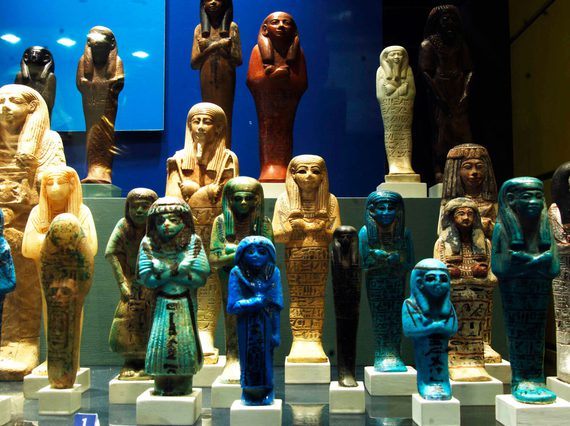
Egypt's Dispersed Heritage
Explore the legacies of the British archaeology in Egypt and the dialogue being created around these collections.
Last updated: 28 February 2022
About the project
From the 1880s to the 1980s hundreds of excavations were carried out across Egypt by British organisations. While many of the objects they discovered remained in Egypt, a large proportion were distributed to around 350 museums in 27 countries across the world.
No other area of archaeology has a material legacy on this scale and, as such, ancient Egyptian collections have become some of the most popular in museums worldwide. The AHRC-funded project ‘Egypt’s Dispersed Heritage: views from Egypt’, which is partnering with National Museums Scotland, seeks to communicate this history of dispersal and create opportunities for dialogue with modern Egyptian communities.
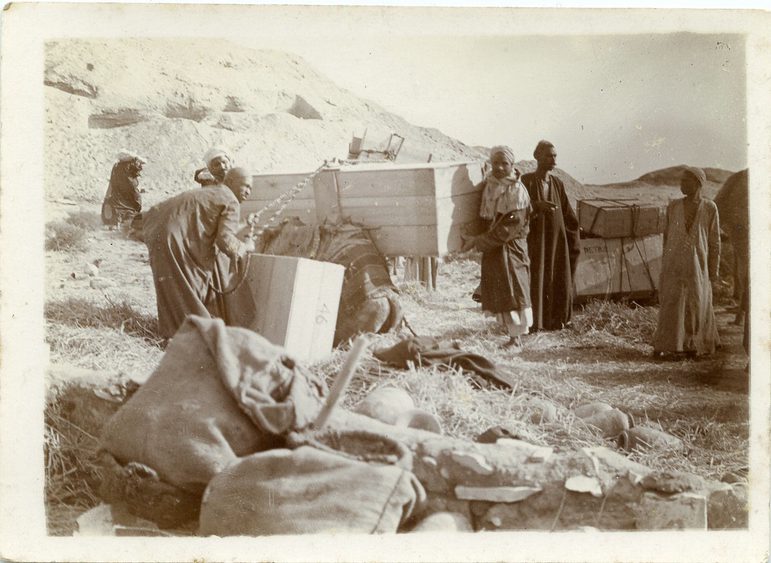
- Project title
Egypt's Dispersed Heritage
- Project active
2019 - 2022
- Research theme
Scotland's Material Heritage, Identities and Cultural Contacts
Contributors
Dr Alice Stevenson - Principal Investigator
University College London Institute of Archaeology
Heba Abd el Gawad - Project Researcher
University College London Institute of Archaeology
Dr Margaret Maitland - Co-investigator
National Museums Scotland
Podcast
In this podcast, you can experience our ‘Egypt, Past and Present in Dialogue’ event held at the National Museum of Scotland on 22nd February 2020.
This event explored the legacies of British archaeological practices in Egypt at the first panel discussion of the ‘Egypt's Dispersed Heritage’ project chaired by journalist, writer and broadcaster Samira Ahmed, featuring National Museums Scotland's Margaret Maitland, Principal Curator of the Ancient Mediterranean, and Egypt’s Dispersed Heritage project researchers Heba Abd el Gawad and Alice Stevenson. Supported by the Arts & Humanities Research council.
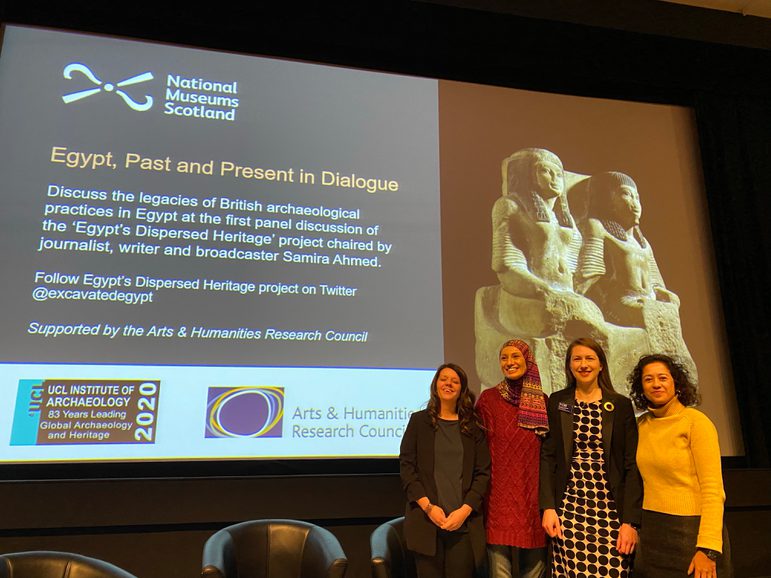
Engaging Egyptian Audiences
Little attention has been given to the impact of colonial legacies on modern Egyptian communities, but there is a demonstrable interest for better information in Egypt about how artefacts were excavated and exported. The ‘Egypt’s Dispersed Heritage’ project is sharing this information and fostering dialogue to transform and amplify Egyptian narratives around these collections and histories. At the same time, the project hopes to transform awareness in the UK of modern Egyptian interest in its heritage.
National Museums Scotland has been participating in online engagement with Egyptian communities by sharing images and information about its collections in collaboration with project researcher Heba Abd el Gawad. Project participants – students and recent graduates in Cairo – shared their personal responses and/or created their own new labels for these objects.
Their responses showed their interest and engagement, especially with less familiar objects of ancient Egyptian material culture like this wooden statuette.
First time seeing statue for a normal woman not queen 😯
Ahmed Zayed
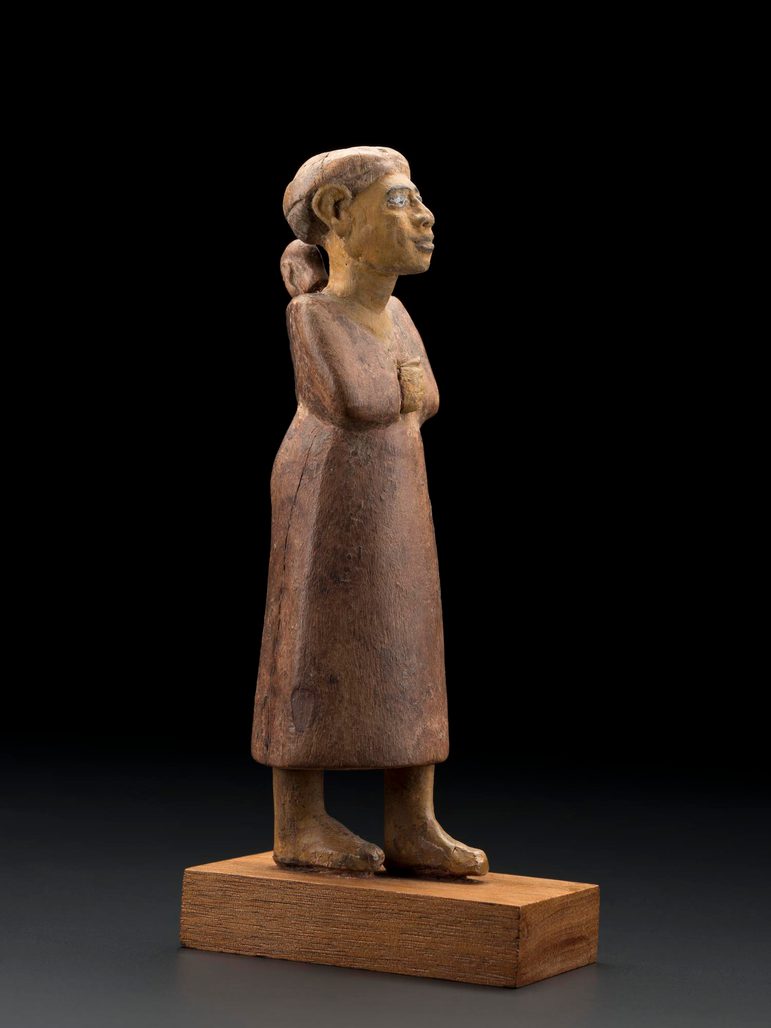
The project participants brought a uniquely Egyptian sensibility to how they saw the objects, for example writing labels comparing the statuette to the famous and beloved Egyptian singer, Um Kulthum (1904-1975).
أم كلثوم, [Um Kalthoum, renowned Egyptian female singer]
May Hossam
الجدة [Grandmother]
Youmna Osama

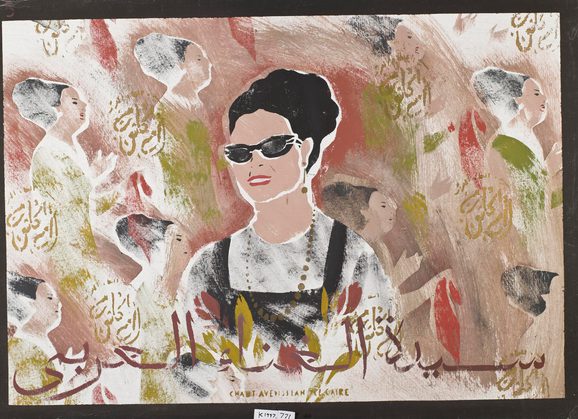
Re-Egyptianising Ancient Egypt
Through various creative outputs, the project is amplifying the voice, visibility, and validity of modern Egyptian communities through a programme of interventions co-designed, developed, and delivered with them, including street performances, comic strips, and educational resources all in Egyptian Arabic.
Ancient Egypt became so western - we’re trying to make it Egyptian again.
Heba Abd el Gawad
Project researcher Heba Abd el Gawad has been collaborating with cartoonist Mohammed Nasser (@Nasser_Junior on Twitter) and has created a series of comics addressed at audiences in Egypt, including this one featuring a statue in National Museums Scotland’s collections. Representing a Chief of Police and his wife from the city of ancient Thebes (modern Luxor), it was excavated in 1857 by Alexander Henry Rhind. The comic created by Nasser uses the self-isolation response to COVID-19 as symbolic reference to the isolation of ancient Egyptian objects from modern Egyptian communities in museum displays.
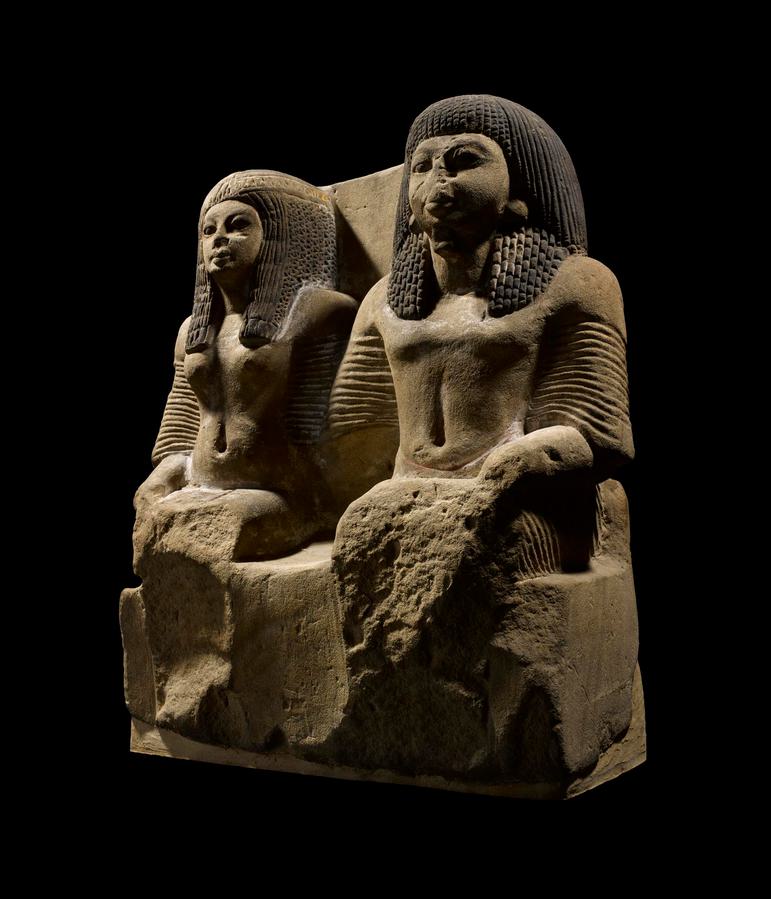
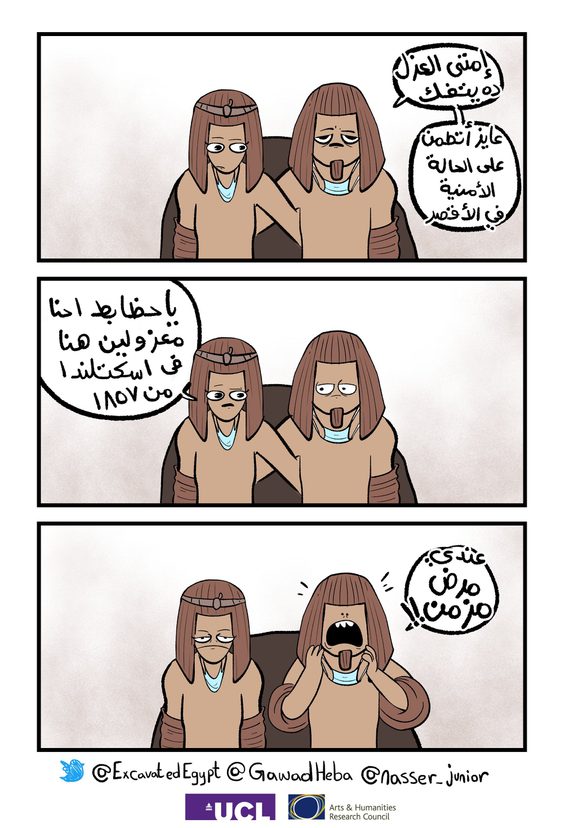
Translation of the comic’s captions from Arabic:
Chief of Police (frustrated): ‘When will this social isolation be over so I can follow up on Luxor’s security condition?’
Woman (fed up): ‘We have been isolated here in Scotland since our arrival in 1857, chief!!!’
Chief of Police (terrified): ‘I have chronic illness??!!’
The comic was accompanied by commentary from Nasser and Heba (translated from Arabic): ‘Ancient Egypt in Western museums can be seen as an orphaned culture, a concept not a culture, frozen in time and place isolated from Egypt's later history layers. Thus, foreign visitors - when asked - tend to be disinterested in Egypt's later history and assume modern communities are disengaged from its past. What do you all think? How do you think this can be resolved?’
‘More information on this statue can be found here. @NtlMuseumsScot has been taking thoughtful and active measures to increase the representation of modern Egypt's people and places within their ancient Egypt gallery through digital media. You can watch one of the films on display here’
Another comic was inspired by May Hossam’s identification of the wooden statuette of a woman in the NMS collection with the legendary Egyptian singer Um Kulthum. While addressing the statuette’s removal as part of the distribution of artefacts from John Garstang’s University of Liverpool excavations at Beni Hassan, it also re-Egyptianizes the statuette by presenting it within a thoroughly Egyptian frame of reference.
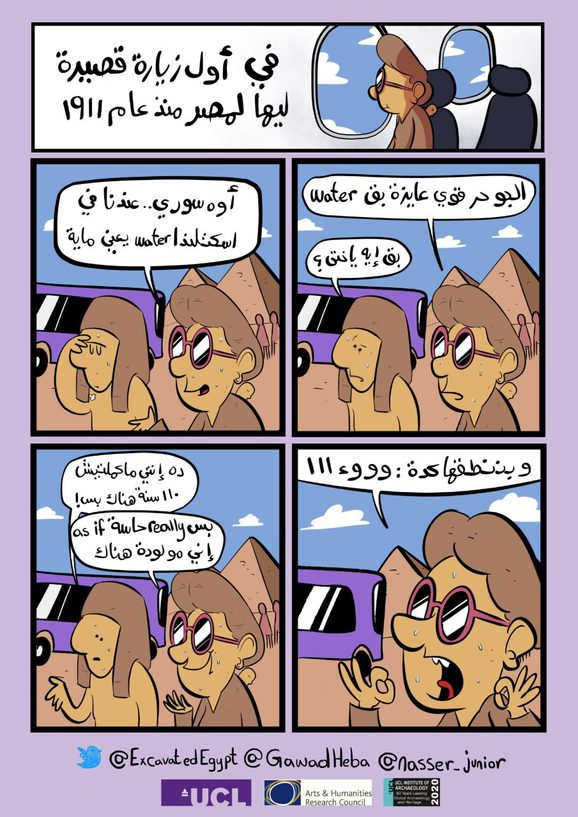
Translation of the captions:
1. On her first short visit to Egypt since 1911.
2. A (NMS statue): Oh, it’s too hot here, I need some “wa’er=water”
3. B (Egyptian object which never left Egypt): Excuse me, some what??
4. A: Oh! Sorry, in Scotland we call it wa’er.
5. B: Wa’er!!! You have only been there for 110 years?!
A: But really, I feel as if I was born there...
The subtext of the comic is autocolonialism. Travelling abroad, particularly to any Western country, is a source of pride among Egyptians, often leading to strong identification with those places. The comic plays on this idea of Egyptians who have been Westernized through travel to make the comic relevant to Egyptians' sense of humour, but its wider aim is to open up discussion about how Egyptology is Eurocentric, which has Westernized how ancient Egypt is perceived.
For more on how Nasser and Heba produced these comics, check out their interview with Digital Hammurabi and their discussion panel for Everyday Orientalism.
Project contact
Dr Margaret Maitland
Supported by
You might be interested in
- Discover
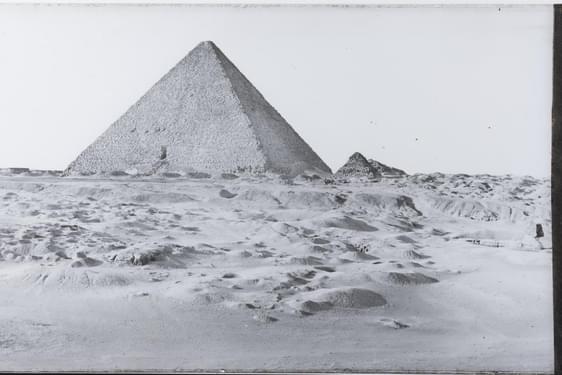
Casing stone from the Great Pyramid of Giza
This block is one of the few surviving casing stones from the Great Pyramid of Giza, built for King Khufu. It is the only pyramid casing stone on display outside Egypt.Khufu was the King of Egypt around 2500 BC. He is also known as Cheops,… - Discover

The Qurna Burial: The discovery of a royal woman’s grave in Egypt
In 1908, an intact burial of a woman and a child was discovered in Qurna, Thebes, Egypt. Over a hundred objects were found in the burial, but the identities of the woman and child are a mystery.The find was made by a team of Egyptian… - Discover
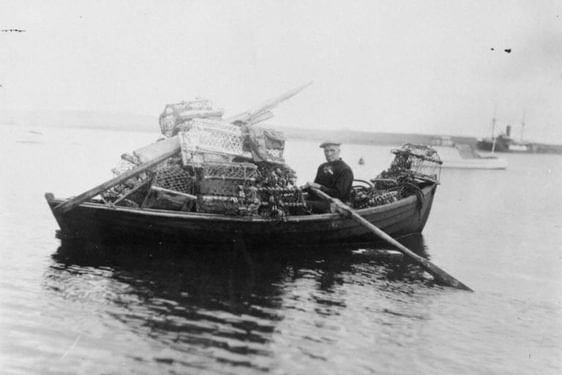
9 summer customs in rural Scotland
Explore stories of spring in rural Scotland through tools, machinery and photographs from the rural history collections.


